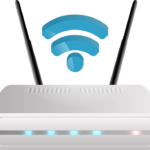main functionality
U.S. Government Required Disclaimer – Commodity Futures Trading Commission. Futures and options trading has large potential rewards, but also large potential risk. You must be aware of the risks and be willing to accept them in order to invest in the futures and options markets. This website is neither a solicitation nor an offer to Buy/Sell futures or options. No representation is being made that any account will or is likely to achieve profits or losses similar to those discussed on this website.
Consider a real trade by a new forex trader who enters a long position with the euro against the U.S. dollar ahead of nonfarm payroll data. Paper trading, also known as virtual trading, is a simulated trading process where you practice buying and selling securities without using real money. It’s an invaluable tool for both beginners and experienced traders to test strategies and build confidence.
- A paper trader records all trades by hand while learning to keep track of hypothetical trading positions, portfolios, and profits or losses.
- In essence, paper trading is a type of trading simulator that is done on paper.
- Paper, simulated, or virtual trading involves simulating financial instrument purchases and sales without using actual cash.
- To begin your paper trading journey, you’ll need to choose a reliable trading platform that offers paper trading capabilities.
- Explore our other guides on trading and charting tools in our Knowledge base to make your trading flexible and build your confidence in markets.
And if you are doing this with your actual money on the line, there is a lot of risk involved. Emotions like greed, fear, and patience will come into play when you trade real money, and control of these emotions is a significant parameter in real trading. Feelings like fear make you exit the winning trades early and limit your profit.
If you plan on opening a real trading account later, it’s better to do it gradually, starting with spot trading (trading without leverage). Remember, paper trading is a learning process, so don’t be afraid to make mistakes and experiment with different approaches. For beginners, unaffiliated trading simulators are often the better choice because they provide a neutral environment focused solely on learning. Paper trading allows you to study and test different trading strategies and techniques before you go live with the real thing.
Explore each nook and cranny and place every kind of stock order you can think of before resetting your balance. You’re trying to get all your mistakes out at the beginning so they won’t come back to bite you in future practice sessions. Tokoni Uti is a writer with several years of experience who has contributed extensively to the blockchain and crypto space. Her work has appeared in The Huffington Post, Cryptomeister, NFTPlazas, and much more.
How Paper Trades Work
The term “paper trading” comes from the old days when investors would write down stock prices and potential trades on paper before making any real decisions. Today, with online trading platforms, paper trading has become much easier and more practical—no need for paper and pen. Keep in mind, though that investors may exhibit different emotions and judgments when risking real money. This can lead them to different behavior when operating a live account.
- Paper trading can be very effective because it allows individuals to test out new trading strategies, tools, and techniques before they actually put them into practice with live trading.
- No representation is being made that any account will or is likely to achieve profits or losses similar to those discussed on this website.
- It’s like a flight simulator for traders, allowing you to test strategies and learn the markets without financial risk.
- While it doesn’t use real money, paper trading does involve the use of real strategies and tools to get the same results.
- If users rely too much on paper trading, they risk not fully grasping the impact of their decisions and could become overconfident.
#2 – Real Trade
But now, with technological advancements, many trading platforms and apps offer paper trades virtually with the same idea in mind. Paper trade of stocks helps the new investor learn the trading and get the look and feel of the share market. One of the significant roadblocks involved in starting trading is the fear of losing money. The virtual platform gives you the facility to What Is Bitcoin execute trades without any fear. You can explore different investing styles and see which strategy fits your business. This platform allows you to compete with other traders and assess your performance.
Ready to Start Your Trading Journey?
Copyright © 2025 FactSet Research Systems Inc.Copyright © 2025, American Bankers Association. SEC fillings and other documents provided by Quartr.© 2025 TradingView, Inc. To remove your additional accounts, in the account settings menu, click the bin icon.
Take a step back and carefully scrutinize your performance
Let us understand the advantages and disadvantages of a paper trade account through the discussion below. After analyzing your paper trading performance, adjust your strategies based on your findings. In contrast, online brokers may offer “demo accounts” with the underlying intention of promoting their services. Experienced traders can (and do) use it to test new strategies and improve their skills. While paper trading has a plethora of benefits, it also comes with its own limitations that you should be aware of.
To learn more about this, you may want to explore how to trade on TradingView — and find other tips that can enhance your trading capabilities. Whether you’re day trading forex, futures, crypto or building a long-term stock portfolio, every asset class has its own rules. It’s a great way to apply both your technical and fundamental analysis as you build confidence and deepen your understanding of the financial markets.
Anyone who has tried to get into asset trading would have heard of paper trading at some point. Paper trading is popular because it essentially offers investors a way to hone their skills and mitigate their risks. Notably, many major trading platforms, including eToro and MarketWatch, offer it to users alongside ‘real’ trading. Paper trading of stocks helps us learn how to execute trades efficiently; we try different strategies without any fear of losing real money in such transactions. But, in this type of trading, the investor does not come with real-time sentiments. For example, sometimes this type of trading gets delayed by 30 minutes, or maybe it’ll be a few hours delayed.
To change your brokerage and adjust your trading settings, click “Paper Trading” in the upper part of the Account manager. To start your trading journey, navigate to the Trading Panel located at the bottom of the Supercharts. Finally, even if you’ve enjoyed a winning performance, you still must overcome one final series of obstacles to confirm your ability to beat the market.
A trade is a means to making gains and understanding the movements of the market. However, the two types of trade as mentioned above are widely discussed and often confused with one another. Let us understand the difference between a paper trade account and a real trade through the comparison below.
Set up your paper trading account
The most obvious difference is that paper trading doesn’t come with the risks and rewards that come with buying and selling assets with real money. Traders can stand to lose and profit from using live accounts compared to using paper trading. The main benefit of paper trading is that it eliminates the risk of loss. That’s because paper trading involves the use of so-called paper or fake money. As such, you don’t have to use (your own) real money to trade stocks or other securities.
A paper trade is a simulated trade in which an investor can practice buying and selling without putting real money at risk. A paper trader records all trades by hand while learning how to maintain records of potential trading positions, investments, and profits or losses. The majority of trading practice currently entails using a virtual stock market simulator that appears to function like a real trading platform.
Upon completion, earn a prestigious certificate to bolster your resume and career prospects. Paper and live trading allow investors to make decisions on their own—without having to consult with an investment professional, such as a broker or dealer. This allows them to make judgments and come to their own conclusion about trends in the market. Paper trading refers to simulating real trading in a digital program where you can make investment decisions with fake money and see how your portfolio would have performed if it was real.

















